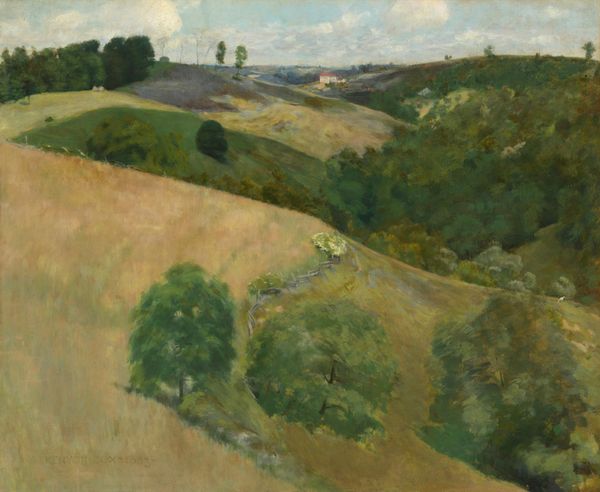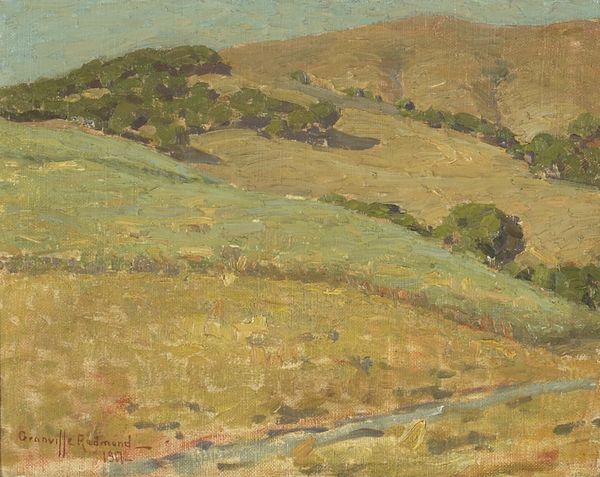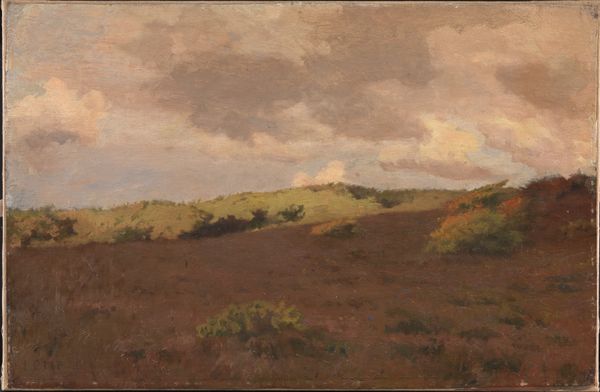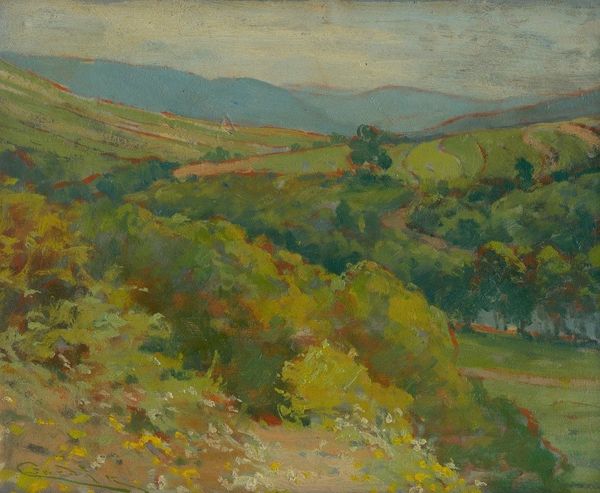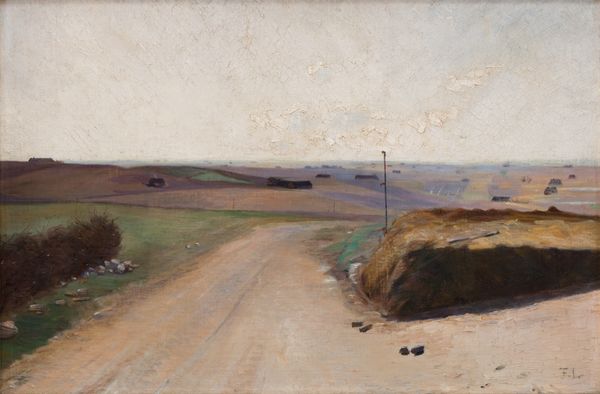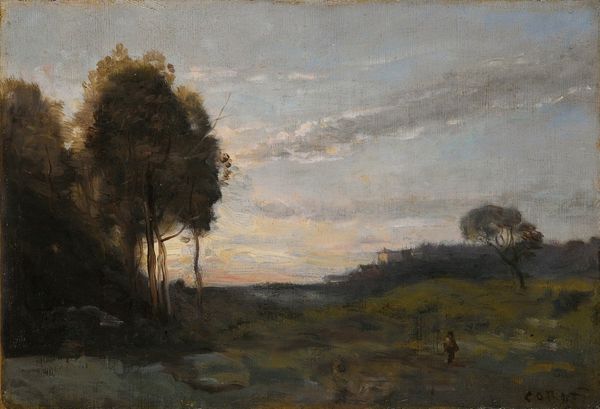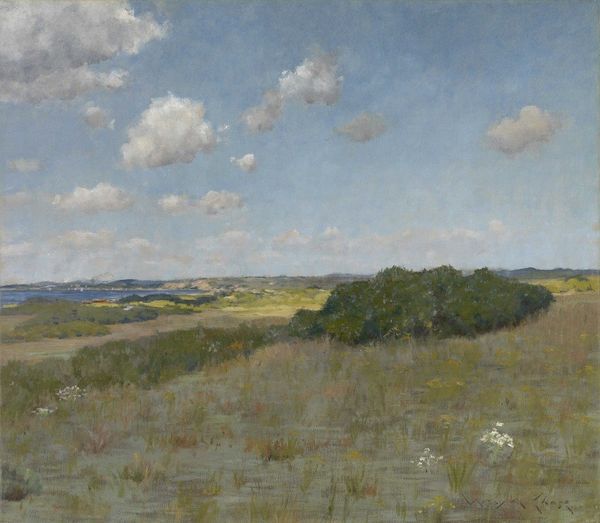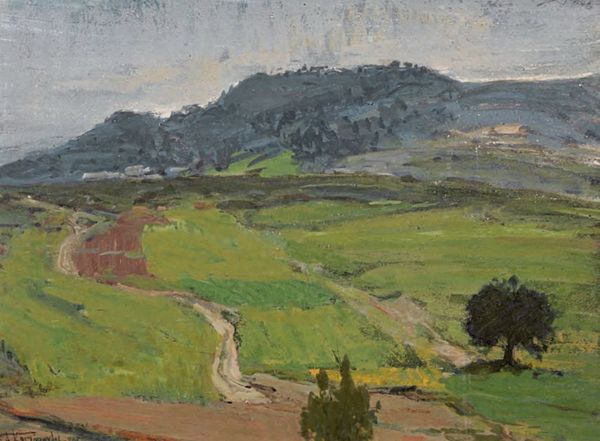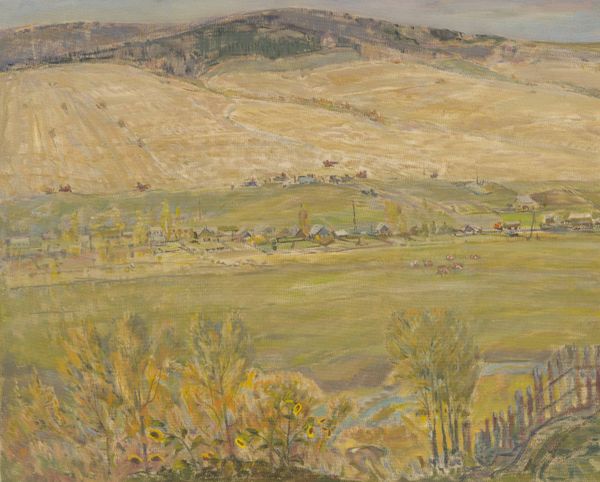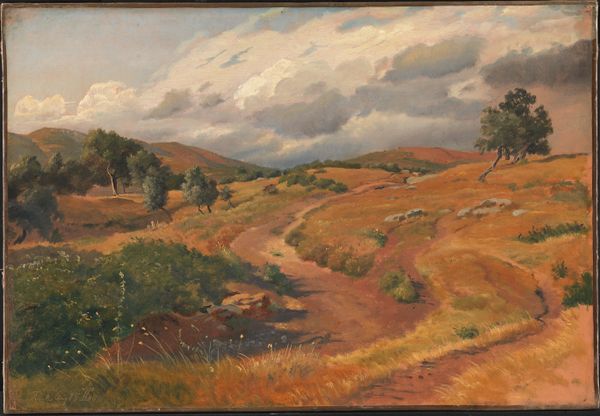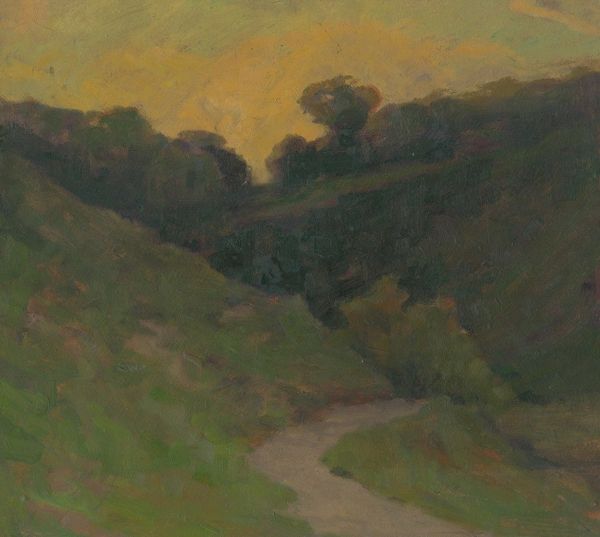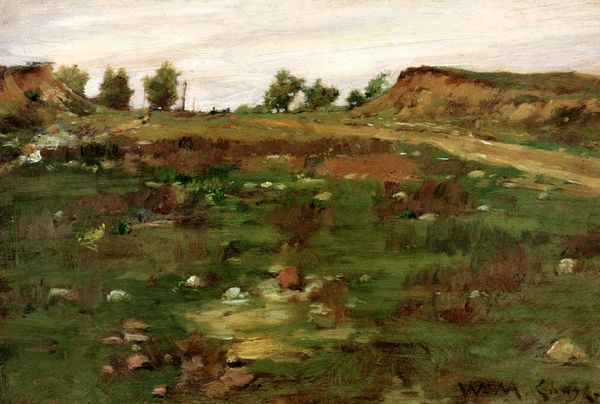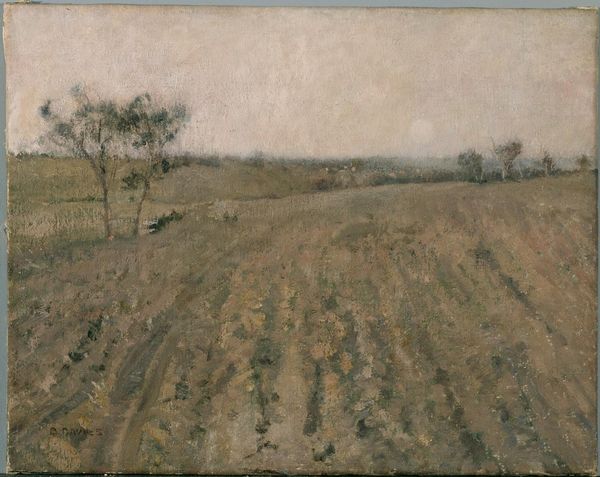
Dimensions: 16 x 30 in. (40.6 x 76.2 cm)
Copyright: Public Domain
Editor: This is Kenyon Cox's "Landscape," painted in 1883, rendered with oil on canvas and displayed here at The Met. The first thing that strikes me is its muted palette; it feels very tranquil and unassuming. How do you interpret this work? Curator: I'm immediately drawn to how the symbols of the landscape here evoke a certain stillness and contemplation. Notice how the undulating hills resemble the ebb and flow of our own thoughts. This wasn’t just a visual record; it's imbued with cultural memory, hinting at the American pastoral ideal – a connection to nature offering solace. What do you notice about the placement of light? Editor: I see what you mean about the cultural connection! The light seems to be intentionally diffused, avoiding any harsh contrasts and fostering that sense of peace. Does the brushwork suggest a certain art-historical context? Curator: The artist clearly understood Impressionist principles in their use of light, yet they retain a grounded sense of form – a subtle nod to the traditions of realism. Do you get a sense that this landscape exists just outside of time? Editor: Yes, the lack of human presence definitely amplifies that timeless quality. This almost feels like a dreamscape or memory rather than a literal depiction. I see echoes of the past while also appreciating the modern handling of paint. Curator: Exactly! The painting balances an observation of nature with deeper, perhaps unconscious cultural ideals. Kenyon Cox delivers not just scenery but visual artifacts filled with meaning. What will you remember about this experience? Editor: How it balances this cultural past and painting present— I didn't realize I could learn so much about a cultural landscape. Curator: Indeed, through the landscape, we see reflections of culture's enduring dialogue with the natural world, encoded and renewed over time.
Comments
No comments
Be the first to comment and join the conversation on the ultimate creative platform.
